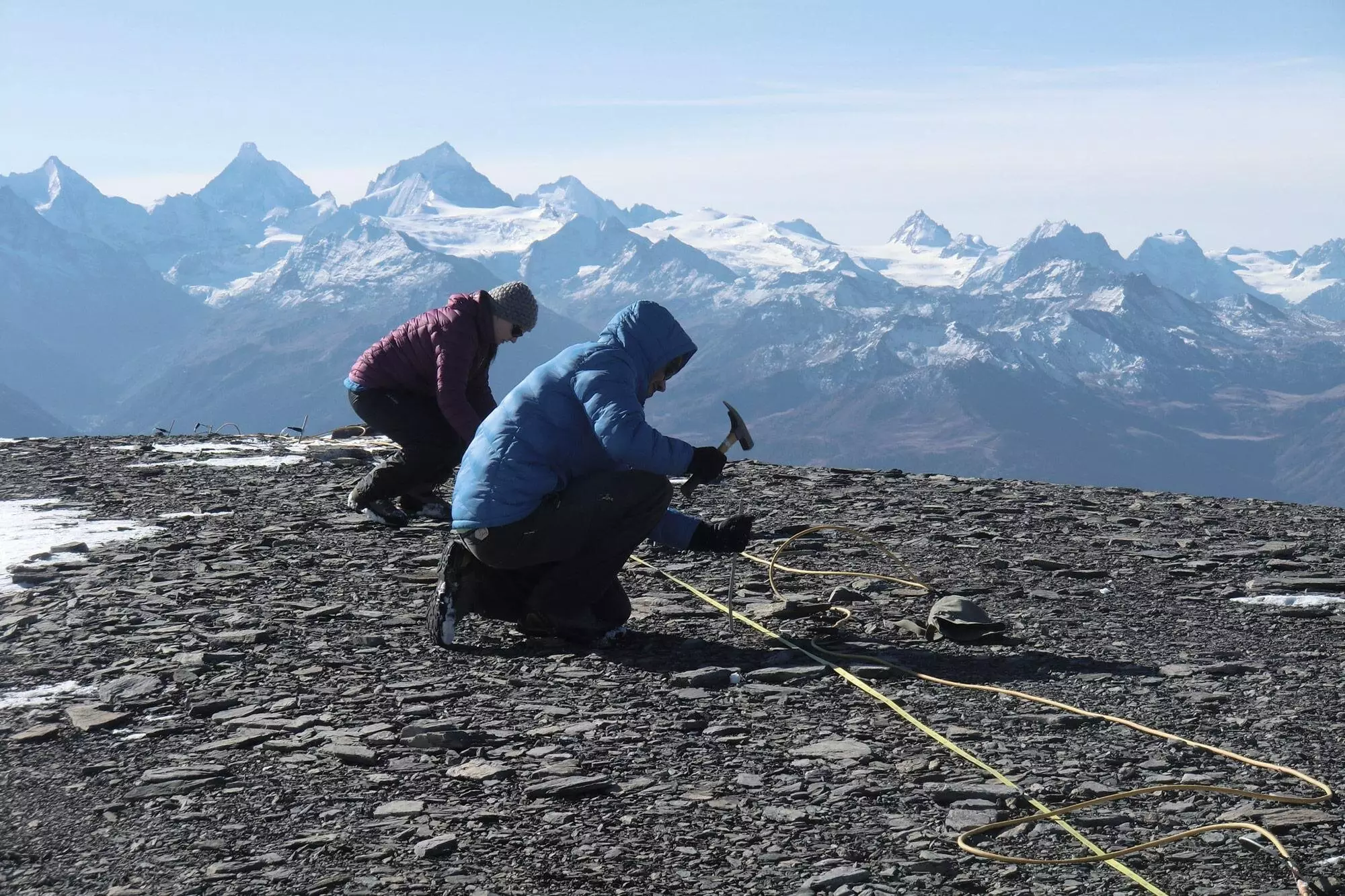The melting of permafrost in the Alps is causing concerns among researchers due to the potential increase in rockfalls and landslides. As the glaciers disappear, the underlying bedrock is becoming unstable, posing risks to both the environment and infrastructure in the region. Traditional methods of monitoring permafrost, such as drilling holes to measure temperatures, are costly and time-consuming, especially at high altitudes. Geoscientist Christian Hauck and his team at the University of Fribourg have developed a non-invasive technique to assess permafrost levels over large areas and predict future changes.
Hauck’s team conducts direct electrical current through the ground between electrodes and measures the electrical potential difference to determine the resistivity of the ground. This resistivity indicates the presence of water in either liquid or frozen form, allowing researchers to quantify the amount of ice in the permafrost. By placing electrodes over an area and taking multiple measurements, a three-dimensional image of the permafrost can be created. However, challenges such as finding suitable locations for electrodes at high altitudes and accounting for various factors in the mountain environment make data interpretation complex.
In a recent study on the slopes of Stockhorn above Zermatt, Hauck’s team found that temperatures in boreholes had increased by about 1°C over the last two decades, causing permafrost to be located deeper in the ground. Using resistivity measurements, they estimated a 15% loss of ice in the permafrost between 2015 and 2022. Another study analyzing data from resistivity measurements across Europe revealed that a single hot summer could lead to irreversible permafrost loss, even with subsequent cold winters. Hauck points out the importance of predicting tipping points in permafrost degradation to prevent irreversible damage.
Hauck’s research suggests that many alpine regions have already reached or are close to reaching a tipping point in permafrost stability. Once this point is crossed, the rate of permafrost loss will accelerate, potentially leading to increased rockfalls and landslides. Establishing reliable methods to forecast these tipping points early on is crucial to mitigating the impact of melting permafrost on alpine landscapes. Hauck emphasizes the need for significant changes in climate policy to prevent further deterioration of permafrost stability in the region.
The ongoing thawing of permafrost in the Alps presents significant challenges for researchers and policymakers in understanding and mitigating the consequences of this phenomenon. By using innovative techniques such as electrical resistivity measurements, scientists like Christian Hauck are able to quantify permafrost loss and predict future scenarios with greater accuracy. It is essential that efforts are made to address the underlying causes of permafrost degradation and implement strategies to preserve the stability of alpine landscapes for future generations.



Leave a Reply